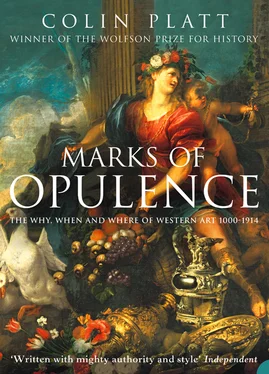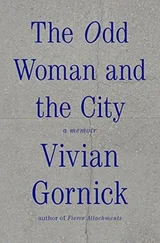It was Clement VII who reaped the whirlwind that the nepotistic Sixtus and his successors had rashly sown. Yet what must have struck most visitors to Rome, both before and after its Sack, was the ceaseless activity of its building sites. Sound money had returned during Sixtus’s long pontificate. What followed was urban renewal. It was to Sixtus IV that Rome owed the Via Sistina and the Ponte Sisto; to Alexander VI, the Via Alexandrina; to Julius II, the Via Giulia; to Leo X, the Via Leonina; and to Clement VII, the Via Clementia. In the 1530s and 1540s, following the Sack, it was Clement’s successor, Paul III (1534–49), who more than restored the ruined city with new buildings. But while this renewal undoubtedly gained momentum from the economic reforms which Sixtus IV put in place, it was never entirely the work of the popes. Sixtus’s reforms are now most often remembered for the institutionalization of the sale of papal offices which helped create an army of Roman sinecurists and placed a heavy charge on future revenues. Yet he had greater success in the short term. Along with much else, Sixtus freed his cardinals and officials, by protecting their heirs, to use the receipts from their church benefices for private building. Thus it was that Alessandro Farnese (Paul III), while still a cardinal, began building his enormous family palace, the Palazzo Farnese, on the Via Giulia. Then after election to the papacy in 1534, Paul nearly doubled the building’s size, spending almost a quarter of a million ducats on it before his death. Yet this was only one of the many new palaces and villas of Renaissance Rome, built by laymen as well as priests, both in the city itself and its Campagna. 12
Paul III borrowed heavily to finance his many works. And it was largely with borrowed money that successive builder-popes – Pius IV (1559–65), Gregory XIII (1572–85), Sixtus V (1585–90), and Paul V (1605–21) – carried out their programmes of embellishment and renewal. They would have done so with more confidence because their credit was good, because their revenues were rising steadily, and – perhaps most of all – because the bulk of their new money, in contrast to earlier times, came directly from taxation of the Papal State. 13 Even so, it would take over a century – and more than a million and a half gold ducats – to complete their flagship project, the new St Peter’s, which became one of the heaviest crosses they had to bear. Begun during the pontificate of Julius II – ‘a patron of genius and a lover of all good art’ (Vasari) – under the direction of Donato Bramante, this huge enterprise drained the papal finances and absorbed the energies of other famous partnerships: Antonio da Sangallo (d.1546) with Paul III; Michelangelo Buonarroti (d.1564) with Julius III; Giacomo della Porta (d.1602) with Gregory XIII and Sixtus V; and – following consecration – Gianlorenzo Bernini (d.1680) with Urban VIII (the bronze baldacchino ) and Alexander VII (the Piazza).
On 18 April 1506, when the foundation stone was laid, both Julius and his architect were over sixty. Understandably, they were men in a hurry. It was Julius’s intention that receipts from the sale of papal indulgences should finance the work, there being long-established precedents for such action. However, another anticipated source of funding was rising revenues from the Papal State, the full recovery of which became the principal objective of Julius II’s high-profile military campaigns. ‘Here even decrepit old men’, grumbled Erasmus in 1509, ‘can be seen showing the vigour of youths in their prime, undaunted by the cost, unwearied by hardship, not a whit deterred though they turn law, religion, peace, and all humanity completely upside down.’ 14 But Erasmus wrote in private to Thomas More, his English friend. And neither Julius (on the field of battle) nor Erasmus (in his study) knew the damage he was doing to the Church. ‘I laid a hen’s egg’, reflected Erasmus after the event. ‘Luther hatched a bird of quite a different species.’ The incubator was Luther’s horror of indulgences.
There were many, from the first, who felt as he did. Within two years of publication in 1518, Luther’s polemical sermon on indulgences and pardons ( Von Ablass und Gnade ) ran into no fewer than twenty German editions. And already by the mid-1520s, there were great numbers of evangelical tracts in circulation in Germany, for many of which Rome itself – so-called ‘Whore of Babylon’, ‘Seven-headed Dragon’, ‘Gathering of Antichrist’, ‘Synagogue of Satin’ – was the enemy. 15 That wild frenzy of pamphleteering – the Flugschriften of Luther’s followers – was a specifically German phenomenon. Yet it could not have happened, even in print-alert Germany, if economic recession had still gripped the West. In the event, it was those circumstances exactly which favoured the Roman papacy – new technologies (including printing), the return of sound money, easy access to cheap credit, and the beginnings of world expansion – that almost immediately split the Church.
Those were the circumstances also that encouraged movement in the arts, introducing the Renaissance to the North: to France under Louis XII (1498–1515) and Francis I (1515–47); to Germany and the Low Countries under Maximilian I (1493–1519) and Charles V (1519–56); to England under Henry VII (1485–1509) and Henry VIII (1509–47). It was the Urbino-born painter Raphael, Julius II’s talented protégé, whose fame (Vasari tells us) ‘spread as far as France and Flanders, and [also] influenced the work of Albrecht Dürer, the marvellous German painter and master of fine copper engravings’. Leonardo da Vinci, invited to France by Francis I, died there in 1519. And while Francis was less successful in attracting Michelangelo to the North, having no better luck with the Venetian painter Titian, he remained nevertheless an assiduous collector of their art, being among those contemporary potentates – Charles V, Holy Roman Emperor, and Suleiman the Magnificent, Sultan of Turkey, were others – who severally made Michelangelo ‘very honourable offers, simply to avail themselves of his great talents’. 16
From 1529, when he began rebuilding Fontainebleau, Francis I assembled the cream of his collections in that huge palace. ‘All that he could find of excellence,’ recorded the architect-engraver Jacques Androuet Du Cerceau (d.1585), ‘was for his Fontainebleau, of which he was so fond that whenever he went there he would say that he was going home.’ 17 And one of the king’s most cherished possessions was Leonardo’s remarkable portrait of Mona Lisa, wife of Francesco del Giocondo, of which Vasari wrote:
If one wanted to see how faithfully art can imitate nature, one could readily perceive it from this head; for here Leonardo subtly reproduced every living detail. The eyes had their natural lustre and moistness … The eyebrows were completely natural, growing thickly in one place and lightly in another and following the pores of the skin … The mouth, joined to the flesh-tints of the face by the red of the lips, appeared to be living flesh rather than paint … There was a smile so pleasing that it seemed divine rather than human; and those who saw it were amazed to find that it was as alive as the original … Altogether this picture was painted in a manner to make the most confident artist – no matter who – despair and lose heart. 18
That final parenthesis has been repeated ever since to explain a paradigm shift in Western art from the truth-to-nature realism of Leonardo and his contemporaries to the exaggerated gestures, long-bodied human figures, vivid contrasting colours, and extremes of light and shade of the Roman Mannerist painters of the next generation. But giants though the great masters of the High Renaissance undoubtedly were, setting new standards of unattainable perfection, the almost immediate rejection by their pupils of regularity in the arts – in sculpture and in architecture, as much as in painting – had more to do with aspiration than despair.
Читать дальше












